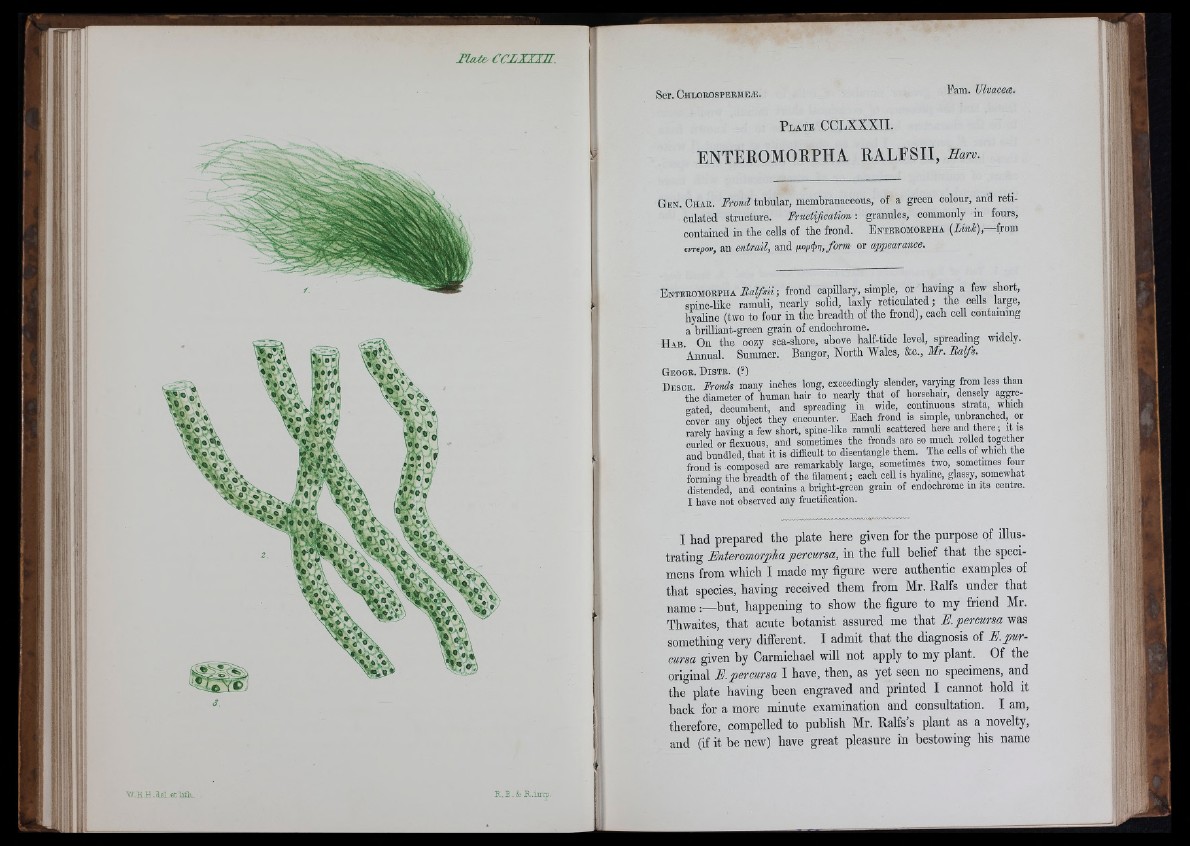
P l a t e CCLXXXII.
ENTEROMORPHA RALFSII, Harv.
G e n . C h a r . Frond tu b u la r, membranaceous, of a g re e n colour, an d r e tic
u la ted s tru c tu re . Frnctification ■. g ran u le s, commonly in fours,
co n ta in ed in tb e cells of th e fro n d . E n t e r o m o r p h a [Link),— horn
€vT€pov, a n entrail, an d p o p ^g , fo rm o r appearance.
E n t e r o m o r p h a fro n d c apillary, simple, or h a v in g a few sh o rt,
sp ine-like ram u li, n e arly solid, lax ly r e tic u la te d ; th e cells large,
h y a lin e (two to fo u r in th e b re a d th of th e fro n d ), each cell eo n tam m g
a b rillia n t-g re e n g ra in of endochrome.
H ab On the oozy sea-shore, above half-tide level, spreading widely.
Annual. Summer. Bangor, North Wales, &c., Mr. B alfs.
G e o g k . D i s t k . ( ? )
D e s c r . Fronds many inches long, exceedingly slender, varying from less than
the diameter of human hair to nearly that of horsehair, densely aggregated
decumbent, and spreading in wide, continuous strata, which
cover any object they encounter. Each frond is simple, unbranched, or
rarely having a few short, spine-like ramuli scattered here and th e re ; it is
curled or flexuous, and sometimes the fro n d s are so much rolled together
and bundled, that it is difficult to disentangle them. The cells of which the
frond is composed are remarkably large, sometimes two, sometimes four
formino- the breadth of the filament; each ceU is hyaline, glassy, somewhat
distended, and contains a bright-green grain of endochrome in its centre.
I have not observed any fructification.
I had prepared the plate here given for the purpose of illustrating
Fnteromorpha percursa, in the full belief that the specimens
from which I made my figure were authentic examples of
that species, having received them from Mr. Ralfs under that
name -.—but, happening to show the figure to my friend Mr.
Thwaites, that acute botanist assured me that F. percursa was
something very different. I admit that the diagnosis of F.pur-
cursa given by Carmichael will not apply to my plant. Of the
original F. percursa I have, then, as yet seen no specimens, and
the plate having been engraved and printed I cannot hold it
back for a more minute examination and consultation. I am,
therefore, compelled to publish Mr. Ralfs’s plant as a novelty,
and (if it be new) have great pleasure in bestowing his name